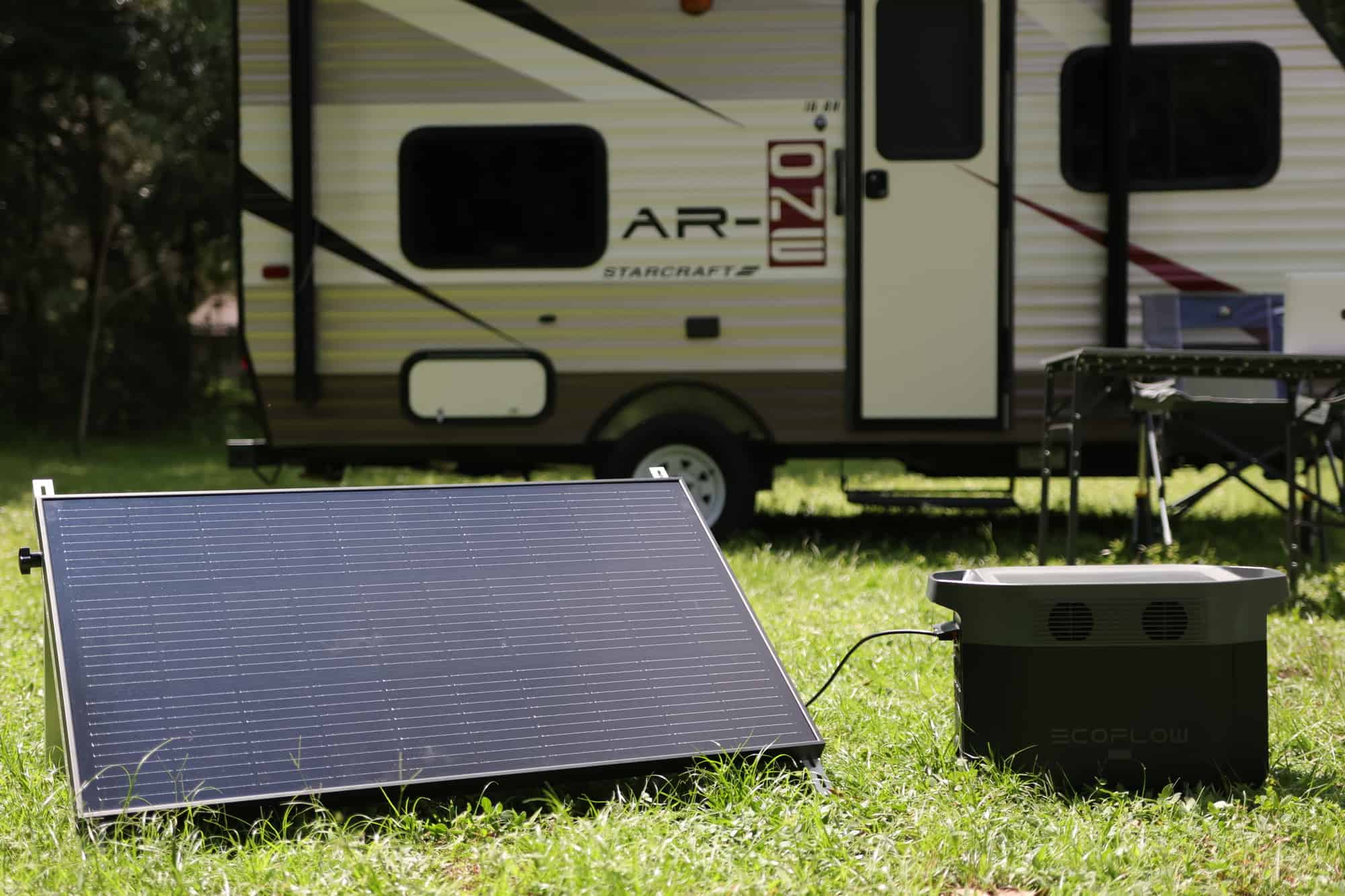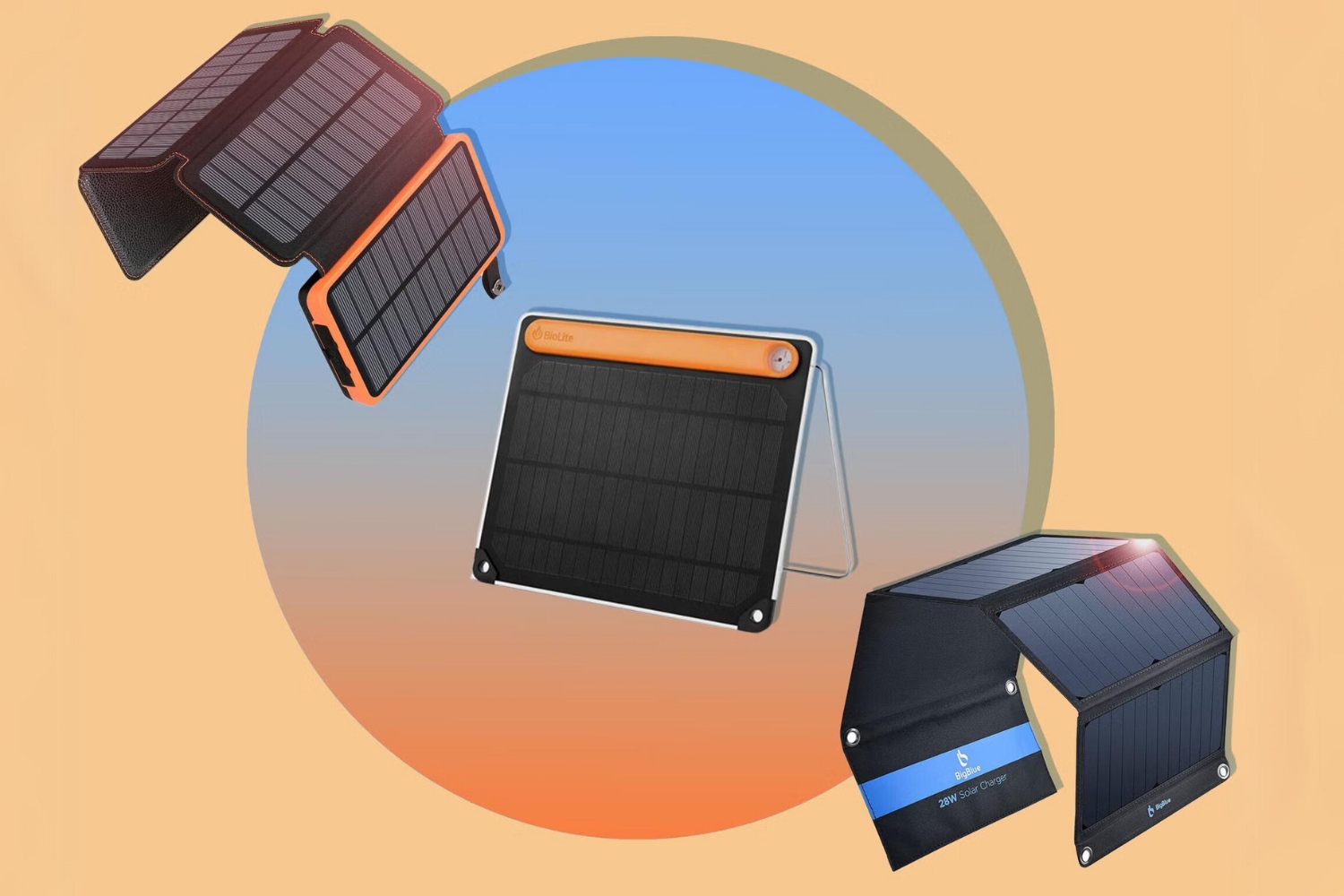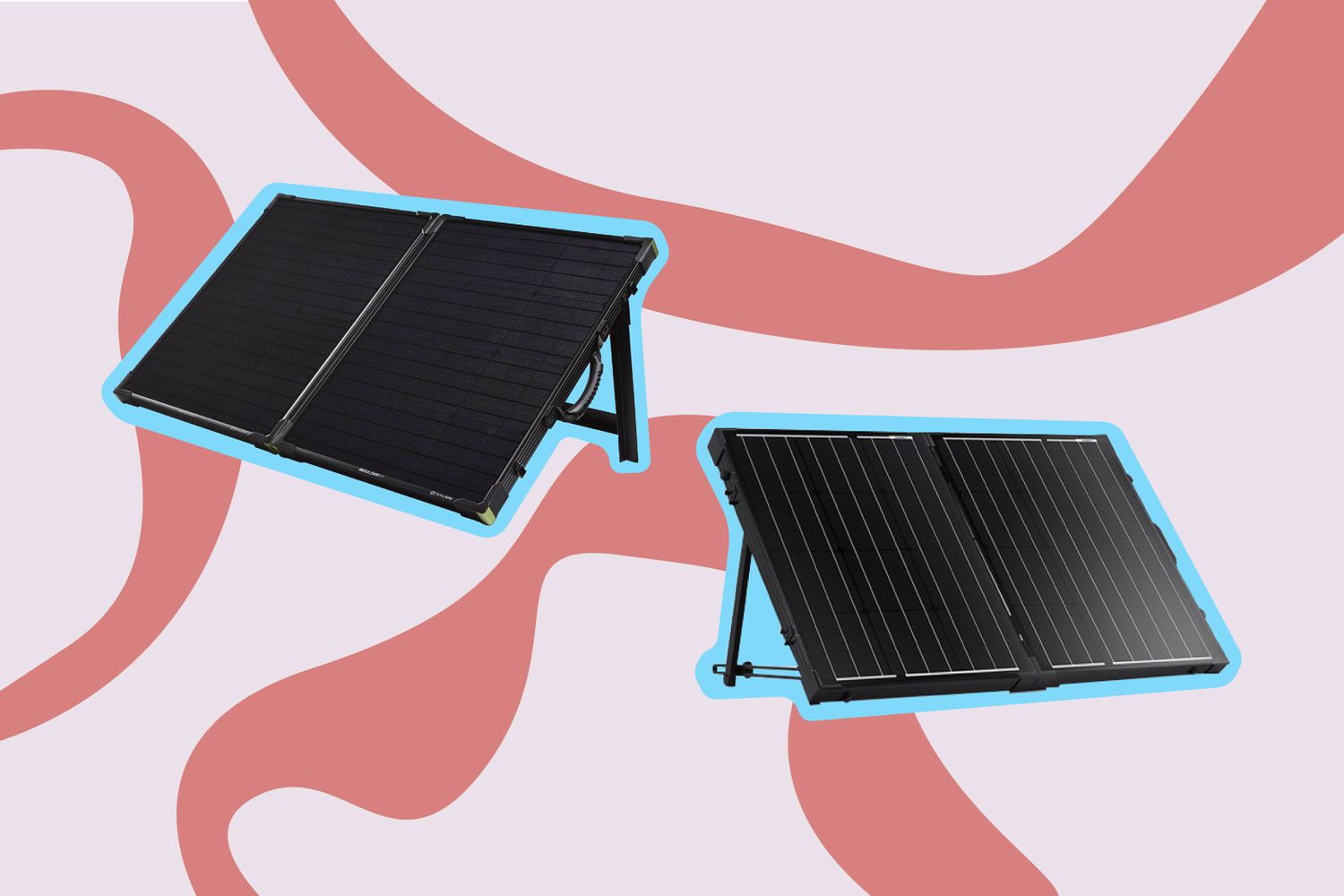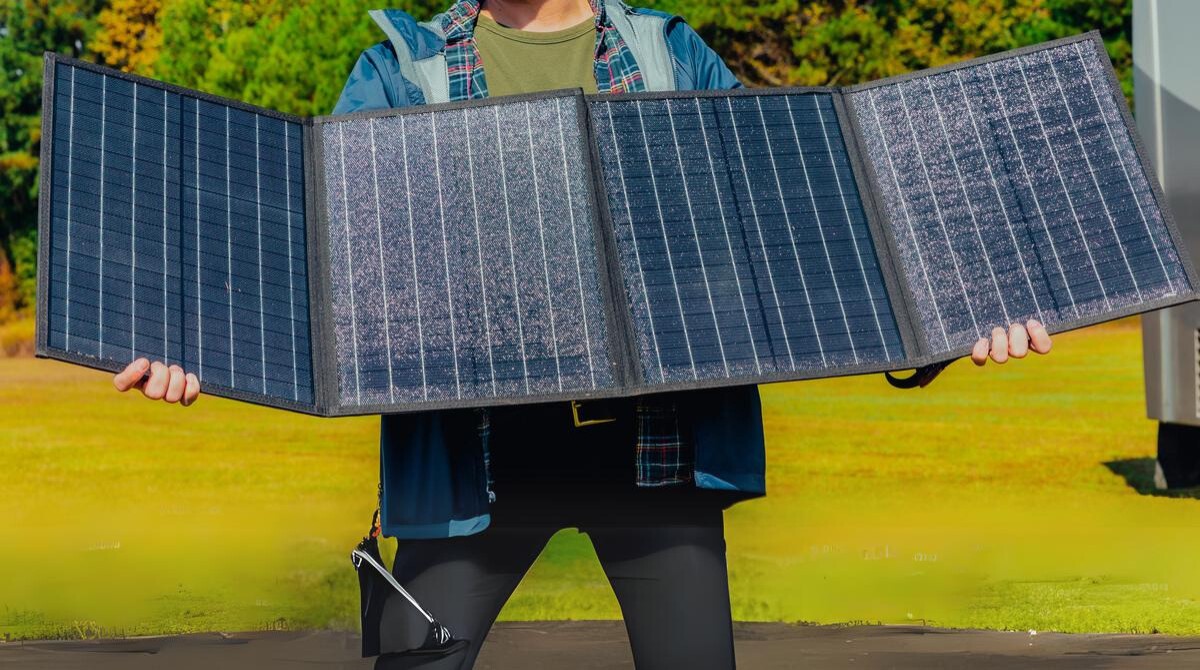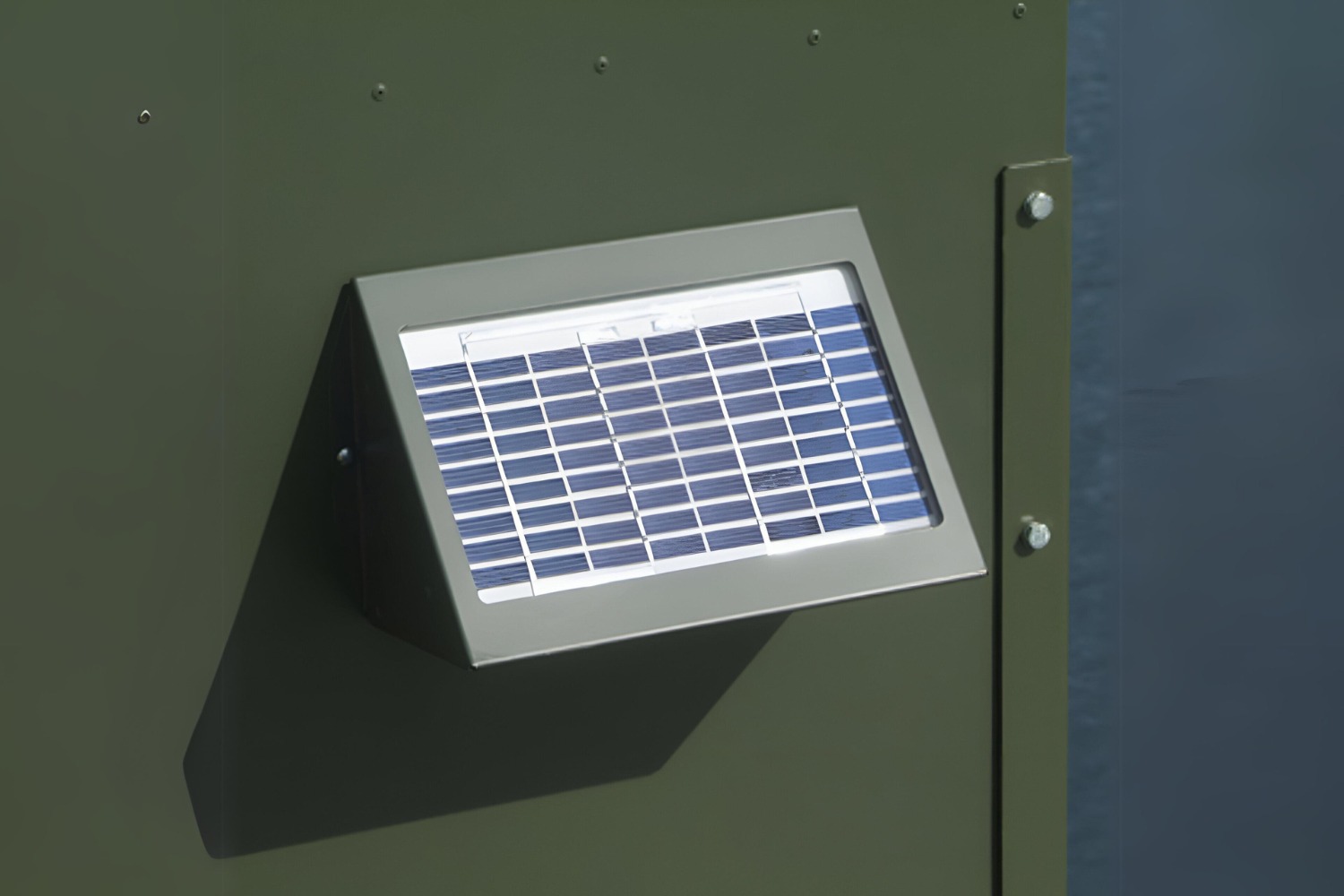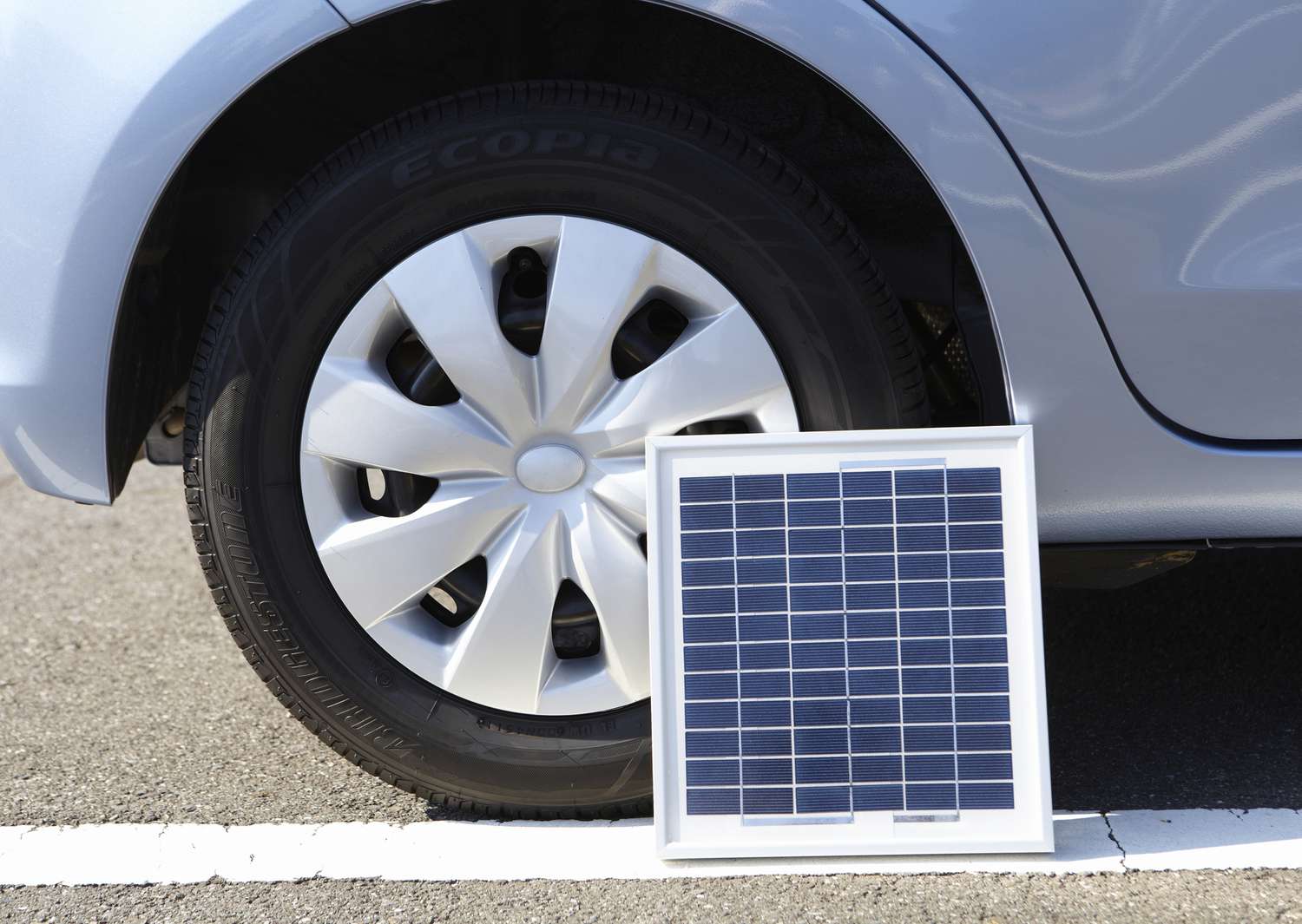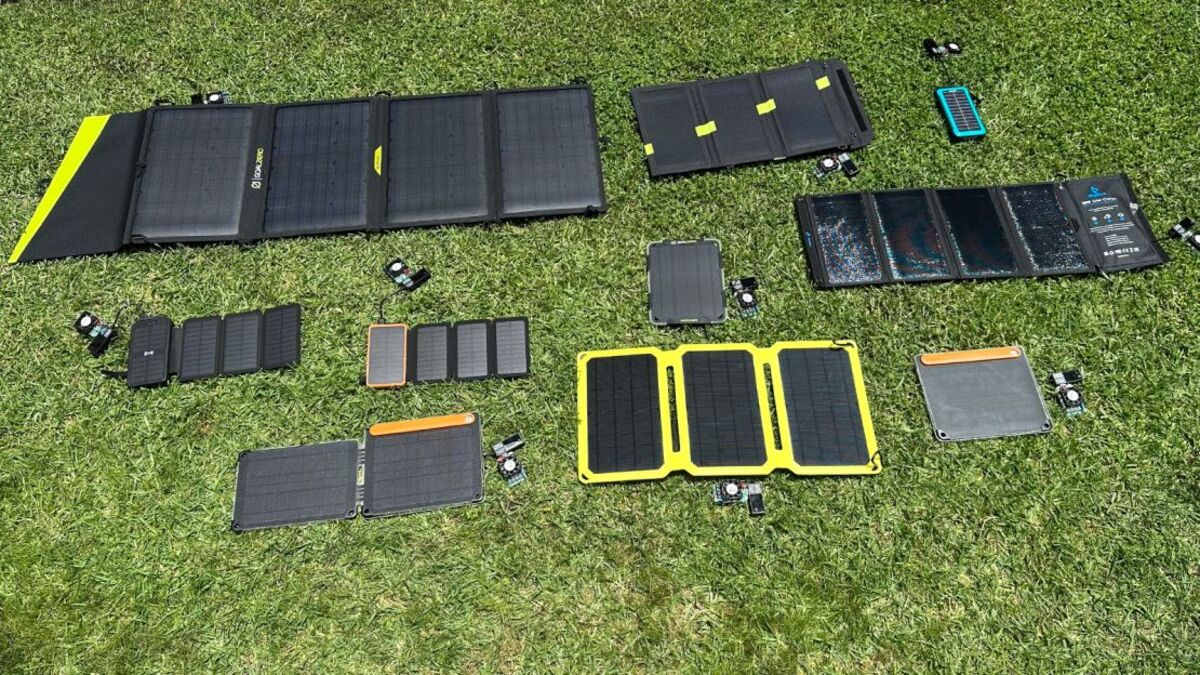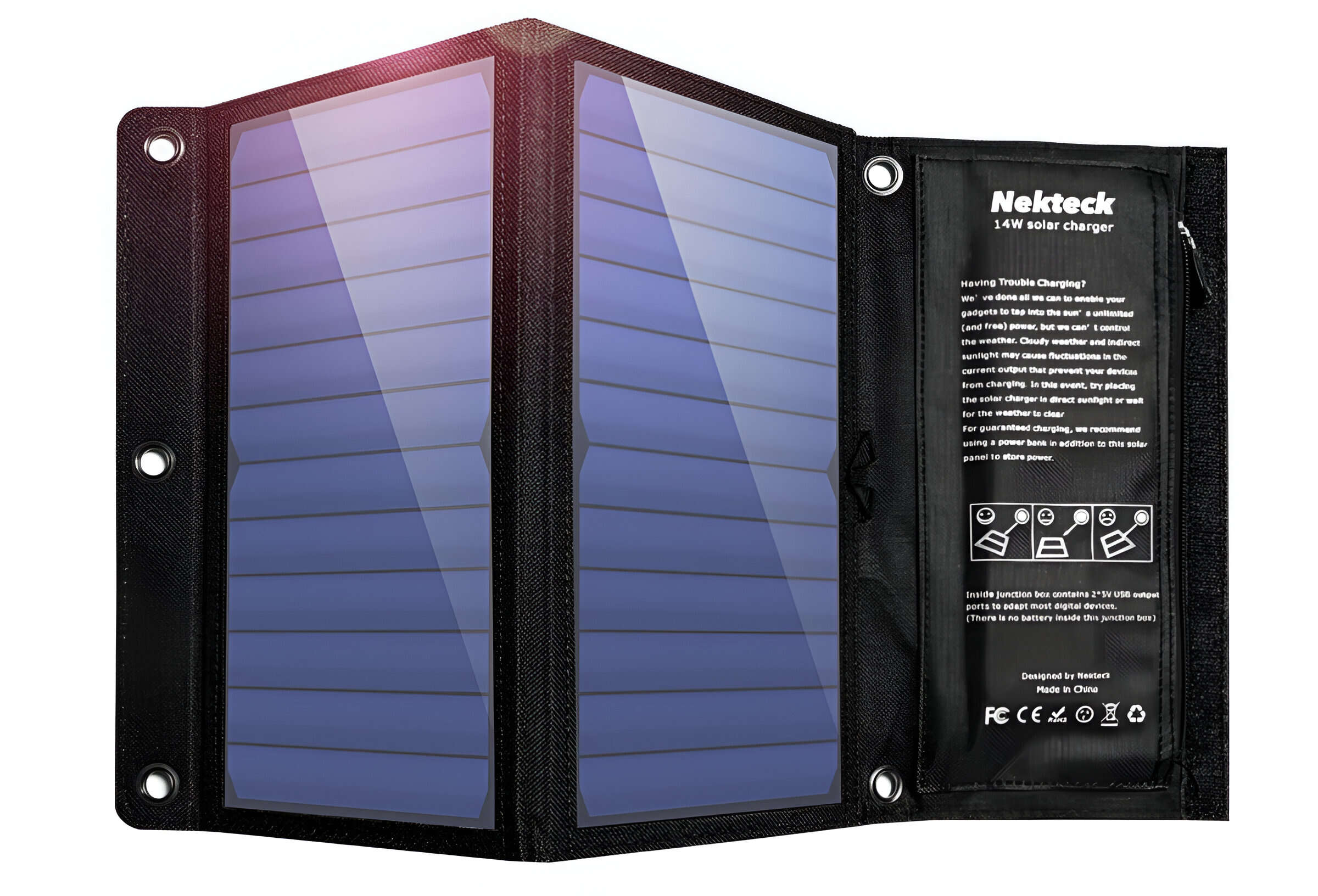Introduction
Solar panel chargers have become increasingly popular as a sustainable and eco-friendly way to recharge batteries, particularly 12V batteries commonly used in various applications like RVs, boats, and off-grid systems. These chargers harness the power of the sun to convert sunlight into electrical energy, providing a convenient solution for charging your batteries on the go.
One of the most frequently asked questions about solar panel chargers is how long it takes to charge a 12V battery. The charging time depends on various factors, including the solar panel output, battery capacity, current sunlight intensity, and the efficiency of the solar panel charger itself.
In this article, we will delve into these factors and provide insights on how they affect the charging time of a solar panel charger. We will also explore different types of solar panel chargers available in the market and discuss how to calculate the approximate charging time for a 12V battery.
By understanding the variables and considerations involved in charging a 12V battery with a solar panel charger, you can make informed decisions that ensure optimal charging performance and maximize the usage of your renewable energy sources.
Factors Affecting the Charging Time of a Solar Panel Charger
The charging time of a solar panel charger to charge a 12V battery can be influenced by several factors. Understanding these factors is crucial in optimizing the charging process and determining how long it will take to replenish the battery’s energy levels.
Solar Panel Output: The output power of the solar panel charger plays a significant role in its charging efficiency. Higher wattage solar panels produce more power, resulting in faster charging times. It’s important to check the wattage rating of the solar panel charger and consider it when estimating the charging time.
Battery Capacity: The capacity of the 12V battery being charged is another crucial factor. Batteries with larger capacities require more time to charge compared to smaller ones. The amp-hour (Ah) rating of the battery denotes its capacity, and a higher capacity battery will take longer to reach full charge.
Current Sunlight Intensity: The intensity of sunlight directly affects the solar panel charger’s charging capability. Bright, direct sunlight provides higher charging efficiency and shorter charging times, while cloudy or overcast conditions can slow down the charging process. It’s essential to consider the prevailing weather conditions when estimating the charging time.
Efficiency of the Solar Panel Charger: The efficiency of the solar panel charger determines how effectively it converts solar energy into electrical energy. High-efficiency chargers can convert a greater percentage of sunlight into usable power, resulting in faster charging times. When choosing a solar panel charger, consider its efficiency rating to optimize the charging time.
By considering these factors and their potential impact on the charging time, you can make informed decisions and set realistic expectations for the charging process. It’s important to note that these factors are interconnected, and optimizing one factor may have an impact on the others. For example, using a higher wattage solar panel charger may shorten the charging time, but if the battery capacity is large, it may still take a significant amount of time to reach full charge.
In the following sections, we will discuss different types of solar panel chargers and dive deeper into their characteristics to provide a comprehensive understanding of their charging capabilities.
Solar Panel Output
The output power of a solar panel charger is a crucial factor that determines its charging capability. It is measured in watts (W) and represents the maximum amount of power the solar panel can produce under optimal conditions.
When it comes to solar panels, higher wattage typically translates to faster charging times. A solar panel with a higher output can generate more electricity, enabling quicker charging of the 12V battery. Therefore, it is advisable to choose a solar panel charger with a wattage that aligns with your charging requirements.
For instance, if you have a 12V battery with a capacity of 100Ah and you want to charge it within a reasonable time frame, opting for a solar panel charger with a higher wattage would be beneficial. A more powerful solar panel charger can produce higher current and voltage, allowing for faster charging of the battery.
It is worth noting that the wattage of the solar panel charger should be compatible with its intended purpose. If you are using a solar panel charger for small devices like smartphones or tablets, a lower wattage charger may be sufficient. However, for larger applications like RVs or boats with larger 12V battery banks, a higher wattage charger is recommended.
Furthermore, keep in mind that the solar panel output can also be affected by external factors such as shading, angle of sunlight, temperature, and dust. These factors can reduce the overall efficiency of the solar panel and consequently impact the charging time. Therefore, it is essential to ensure the solar panel is placed in an optimal location where it can receive maximum sunlight without any obstructions.
In the next section, we will explore the relationship between battery capacity and charging time, shedding light on the importance of considering the battery’s specifications when estimating charging durations.
Battery Capacity
The capacity of the 12V battery being charged is a crucial factor that directly impacts the charging time. Battery capacity refers to the amount of charge it can hold and is typically measured in amp-hours (Ah).
A battery with a larger capacity will require more time to charge compared to a battery with a smaller capacity. This is because the solar panel charger needs to supply a greater amount of electrical energy to fully charge a higher-capacity battery.
For example, let’s consider two 12V batteries, one with a capacity of 50Ah and another with 100Ah. Assuming all other factors remain constant, the battery with a capacity of 100Ah will take longer to charge compared to the one with a capacity of 50Ah.
It’s important to note that the charging time is not linearly proportional to the battery capacity. As the battery reaches higher charge levels, the charging process gradually slows down. This occurs due to various factors, including reduced charging voltage to prevent overcharging and the battery’s internal resistance.
In addition to considering the battery capacity, it’s crucial to know the recommended charge rate. Charging a battery at a higher rate than what it is designed for can lead to decreased battery life and potential damage. Therefore, ensure that the solar panel charger’s charging capability matches the recommended charge rate of the battery.
Some 12V batteries have a specified charge current, which indicates the maximum safe current for charging the battery. It’s advisable to check the battery manufacturer’s specifications or consulting with a professional to determine the appropriate charging current for your specific battery.
By understanding the capacity and recommended charging rate of the 12V battery, you can estimate the approximate charging time and ensure safe and efficient charging.
Next, we will explore how the current sunlight intensity plays a significant role in the charging time of a solar panel charger.
Current Sunlight Intensity
The intensity of sunlight at the time of charging significantly affects the charging time of a solar panel charger. Bright, direct sunlight provides higher charging efficiency and shorter charging times, while cloudy or overcast conditions can slow down the charging process.
When sunlight is abundant and direct, the solar panel receives a higher intensity of light, resulting in more electricity generation. This allows the solar panel charger to convert more sunlight into electrical energy, thereby charging the 12V battery at a faster rate.
On the other hand, during cloudy or overcast conditions, the intensity of sunlight decreases. The reduced sunlight intensity leads to a lower electricity generation, which in turn extends the charging time. It is important to take into account the weather conditions and adjust your expectations accordingly when estimating the time it will take to fully charge the battery.
In addition to weather conditions, factors such as shading and the angle of sunlight can also impact the sunlight intensity reaching the solar panel. Shading from nearby objects, trees, or buildings can cast shadows on the solar panel and reduce its exposure to direct sunlight. Similarly, the angle at which sunlight strikes the solar panel affects its efficiency, with optimal angles maximizing energy absorption.
For optimal charging performance, it is essential to place the solar panel charger in a location with maximum sunlight exposure, free from obstructions that may cause shading. Additionally, adjusting the angle of the solar panel to align with the sun’s position throughout the day can help maximize the sunlight intensity reaching the panel.
Understanding the impact of current sunlight intensity allows for more accurate estimations of charging time and helps optimize the charging performance of the solar panel charger. In the next section, we will explore the efficiency of the solar panel charger itself and its influence on the charging time.
Efficiency of the Solar Panel Charger
The efficiency of the solar panel charger is a crucial factor that determines how effectively it converts solar energy into electrical energy. It is measured as a percentage and represents the ratio of the actual power output of the charger to the potential power it could produce under ideal conditions.
A high-efficiency solar panel charger can convert a larger percentage of sunlight into usable electrical energy, resulting in faster charging times. On the other hand, a less efficient charger may waste some of the available solar energy, requiring more time to fully charge the 12V battery.
When choosing a solar panel charger, it is advisable to look for higher efficiency ratings. A higher efficiency rating indicates that the charger can make better use of the available sunlight, minimizing energy loss and maximizing the charging performance.
It’s important to note that the efficiency of a solar panel charger can vary depending on factors such as temperature, shading, and the quality of the charger’s components. Therefore, it is crucial to select a reputable and reliable charger that offers good efficiency across a range of operating conditions.
In addition to the efficiency of the solar panel charger, it’s worth considering any additional features or technologies that may enhance its charging performance. Some chargers may incorporate MPPT (Maximum Power Point Tracking) technology, which optimizes the charger’s output based on the available solar energy. This can further improve the overall efficiency and shorten the charging time.
By choosing a solar panel charger with higher efficiency and potentially incorporating advanced technologies like MPPT, you can ensure that you are getting the most out of your renewable energy source and minimize the time required to charge your 12V battery.
In the next sections, we will explore different types of solar panel chargers and their characteristics in further detail to provide a comprehensive understanding of their charging capabilities.
Types of Solar Panel Chargers
When it comes to solar panel chargers, there are several types available in the market, each with its own characteristics and charging capabilities. Understanding these different types can help you choose the most suitable charger for your needs.
Monocrystalline Solar Panel Chargers: Monocrystalline solar panels are made from a single crystal structure, making them highly efficient and durable. These chargers have a sleek and compact design, making them ideal for portable charging applications. Monocrystalline solar panel chargers offer excellent power output and can charge 12V batteries relatively quickly.
Polycrystalline Solar Panel Chargers: Polycrystalline solar panels are made from multiple silicon fragments, resulting in a slightly lower efficiency compared to monocrystalline panels. However, they are more affordable and still provide good charging capabilities. Polycrystalline solar panel chargers are suitable for a wide range of applications and can effectively charge 12V batteries.
Thin-Film Solar Panel Chargers: Thin-film solar panels are made by depositing a thin layer of photovoltaic material onto a substrate. These chargers are lightweight and flexible, making them highly portable and easy to use in various situations. While thin-film solar panel chargers may have lower efficiency compared to crystalline panels, they are versatile and can be used for charging 12V batteries efficiently.
Amorphous Solar Panel Chargers: Amorphous solar panels are made by depositing a non-crystalline silicon on a substrate. These chargers are known for their ability to perform well under low-light conditions, making them suitable for areas with less sunlight intensity. While amorphous solar panel chargers may have lower efficiency, their unique characteristics make them useful in specific scenarios where direct sunlight is limited.
When choosing a solar panel charger, consider your specific needs, budget, and application requirements. If you require higher efficiency and have ample sunlight, monocrystalline or polycrystalline solar panel chargers may be the best options. For portability and flexibility, thin-film or amorphous solar panel chargers can be ideal choices.
It’s worth noting that the specific specifications and performance may vary among different brands and models. Reading product reviews and comparing features can help you make a more informed decision when selecting a solar panel charger.
In the next section, we will explore how to calculate the approximate charging time for a 12V battery using a solar panel charger.
Monocrystalline Solar Panel Chargers
Monocrystalline solar panel chargers are a popular choice when it comes to solar charging applications. They are known for their high efficiency and durability, making them ideal for charging 12V batteries in various scenarios.
The key characteristic of monocrystalline solar panels is their single crystal structure, which allows them to have a higher efficiency compared to other types of solar panels. This means that they can convert a greater percentage of sunlight into usable electrical energy, resulting in faster charging times for 12V batteries.
In addition to their efficiency, monocrystalline solar panels also offer other advantages. They have a sleek and uniform appearance, with a dark, almost black color, that gives them a modern and aesthetically pleasing look. They are also typically more compact and lightweight compared to other types of solar panels, making them portable and easy to transport.
Monocrystalline solar panel chargers are widely used in various applications, including charging batteries for RVs, boats, smartphones, tablets, and other electronic devices. They are particularly suitable for situations where space is limited or where a higher charging efficiency is desired.
When selecting a monocrystalline solar panel charger, it is important to consider its wattage, voltage, and current ratings. These specifications will determine the charging capabilities and compatibility with your 12V battery. Additionally, it is advisable to check the warranty offered by the manufacturer, as it can provide assurance about the charger’s quality and long-term performance.
Monocrystalline solar panel chargers are often priced higher than other types of solar chargers due to their superior efficiency and durability. However, their benefits and overall charging performance make them a worthwhile investment for those seeking reliable and efficient charging solutions for their 12V batteries.
In the next section, we will explore another type of solar panel charger: polycrystalline solar panel chargers.
Polycrystalline Solar Panel Chargers
Polycrystalline solar panel chargers are a popular and cost-effective choice for charging 12V batteries. They offer a balance between efficiency, affordability, and versatility, making them suitable for a wide range of applications.
Unlike monocrystalline solar panels, which are made from a single crystal structure, polycrystalline solar panels are made from multiple silicon fragments. This manufacturing process creates a distinctive pattern on the surface of the panel, giving it a bluish hue.
While polycrystalline solar panels have a slightly lower efficiency compared to monocrystalline panels, they are still capable of converting a good percentage of sunlight into usable electrical energy. They provide reliable and efficient charging for 12V batteries, making them a popular choice for both residential and commercial solar charging applications.
Polycrystalline solar panel chargers are known for their durability and resistance to high-temperature environments. They perform well in a variety of weather conditions and can withstand the rigors of outdoor use. This makes them ideal for applications such as RVs, boats, off-grid systems, and other outdoor portable devices.
In terms of appearance, polycrystalline solar panels have a more fragmented and less uniform surface compared to monocrystalline panels. However, this does not affect their performance or charging capabilities.
When choosing a polycrystalline solar panel charger, it’s important to consider the wattage, voltage, and current ratings to ensure compatibility with your 12V battery. Additionally, check for certifications and warranties provided by the manufacturer to ensure the quality and reliability of the charger.
Polycrystalline solar panel chargers offer a cost-effective solution for charging 12V batteries, making them a popular choice for those seeking an efficient and budget-friendly solar charging option. Their versatility and durability make them well-suited for various applications, giving users peace of mind and reliable charging performance.
In the next section, we will discuss thin-film and amorphous solar panel chargers, exploring their unique characteristics and advantages.
Thin-Film Solar Panel Chargers
Thin-film solar panel chargers offer a unique and flexible approach to solar charging. They are known for their lightweight design, versatility, and ability to perform well under various lighting conditions, making them ideal for certain charging applications.
Unlike crystalline solar panels that use silicon wafers, thin-film solar panels are made by depositing a thin layer of photovoltaic material onto a substrate. This construction allows them to be more flexible and lightweight compared to traditional solar panels.
Thin-film solar panel chargers are highly portable and can be easily folded or rolled, making them convenient to carry for outdoor activities, camping, or backpacking. They are also suitable for mounting on curved surfaces, expanding their installation possibilities.
One of the notable advantages of thin-film solar panel chargers is their ability to perform well under low-light conditions. They can generate electricity even when sunlight intensity is not at its peak, such as during cloudy or overcast weather. This makes them suitable for charging 12V batteries in areas with less direct sunlight or in situations where consistent bright sunlight cannot be guaranteed.
Although thin-film solar panels may have lower efficiency compared to crystalline solar panels, their unique characteristics make up for it in certain scenarios. Their versatility and portability make them popular for charging small electronic devices like smartphones, tablets, and other portable gadgets.
When selecting a thin-film solar panel charger, it’s important to consider its wattage, voltage, and current output to ensure compatibility with your 12V battery. Additionally, check for durability features like weather resistance and warranty offered by the manufacturer to ensure the longevity of the charger.
Thin-film solar panel chargers offer a compact, lightweight, and flexible charging solution. Their ability to perform under low-light conditions and their versatility make them a practical choice for those who require portable and adaptable solar charging options.
In the next section, we will discuss amorphous solar panel chargers, which offer their own set of advantages and characteristics.
Amorphous Solar Panel Chargers
Amorphous solar panel chargers are a unique type of solar charger known for their capability to operate efficiently under low-light conditions and their flexibility in installation. They offer a reliable and versatile charging solution for various applications.
Unlike crystalline solar panels, which have a defined crystal structure, amorphous solar panels are made by depositing a non-crystalline silicon layer onto a substrate. This manufacturing process allows the panels to have wide-ranging light absorption and perform well under various lighting conditions.
One of the key advantages of amorphous solar panel chargers is their ability to generate electricity even in low-light situations. They can efficiently convert sunlight into electrical energy under cloudy or overcast weather conditions, making them suitable for areas with limited direct sunlight or where consistent sunlight exposure cannot be guaranteed.
Amorphous solar panel chargers also have a high tolerance for temperature variations, allowing them to maintain good charging performance even in extreme temperatures. This makes them suitable for outdoor applications where temperature fluctuations are common.
Additionally, amorphous solar panels have a flexible structure, which offers more versatility in terms of installation. They can be easily mounted on curved or irregular surfaces, opening up various possibilities for their use in charging applications.
When selecting an amorphous solar panel charger, it’s essential to consider its wattage, voltage, and current output to ensure compatibility with your 12V battery. Additionally, check for features like durability, weather resistance, and warranties provided by the manufacturer to ensure the longevity and reliability of the charger.
Amorphous solar panel chargers provide a reliable and adaptable charging solution, especially in situations where direct sunlight is limited or inconsistent. Their ability to operate efficiently under low-light conditions and their flexibility in installation make them a valuable choice for charging 12V batteries in various settings.
Now that we’ve explored the different types of solar panel chargers and their characteristics, let’s move on to the next section, where we will discuss how to calculate the approximate charging time for a 12V battery using a solar panel charger.
Calculating the Charging Time
Calculating the approximate charging time for a 12V battery using a solar panel charger requires considering various factors such as the battery capacity, solar panel output, current sunlight intensity, and charger efficiency.
An effective way to estimate the charging time is to use the formula:
Charging time (in hours) = battery capacity (in Ah) / charging current (in A)The charging current can be calculated by dividing the solar panel’s wattage by the battery voltage:
Charging current (in A) = solar panel wattage (in W) / battery voltage (in V)For example, let’s consider a 12V battery with a capacity of 100Ah and a monocrystalline solar panel charger with a wattage of 50W. Using the formulas above, we can calculate the approximate charging time:
Charging current = 50W / 12V = 4.17A
Charging time = 100Ah / 4.17A ≈ 24 hoursKeep in mind that this calculation provides an estimation and may not account for efficiency losses and other variables such as weather conditions. It’s also important to check the recommended charge rate for your specific battery to prevent overcharging or other issues.
Factors such as current sunlight intensity and charger efficiency can affect the actual charging time. If the sunlight intensity is low or the charger efficiency is not optimal, it may take longer to fully charge the battery. On the other hand, if the sunlight intensity is high and the charger efficiency is excellent, the charging time may be shorter than estimated.
Ultimately, using the calculated estimate as a starting point and adjusting it based on real-world conditions and observations will provide a more accurate idea of the charging time for your specific setup.
In the next section, we will work through an example calculation to further illustrate the process of estimating the charging time for a 12V battery using a solar panel charger.
Example Calculation: Charging Time for a 12V Battery
Let’s work through an example calculation to demonstrate how to estimate the charging time for a 12V battery using a solar panel charger.
Suppose we have a 12V battery with a capacity of 120Ah, and we are using a polycrystalline solar panel charger with a wattage of 100W.
To calculate the charging current, we divide the solar panel wattage by the battery voltage:
Charging current (in A) = 100W / 12V = 8.33ANow, using the formula to calculate the charging time:
Charging time (in hours) = 120Ah / 8.33A ≈ 14.4 hoursBased on this calculation, it is estimated that it will take approximately 14.4 hours to fully charge the 12V battery using the given solar panel charger.
However, it is important to note that this is just an estimation and may not consider factors such as solar panel efficiency, variations in sunlight intensity, or the recommended charge rate for the battery. These variables can affect the actual charging time.
For a more accurate estimation, it’s best to consider real-world observations and factors specific to your charging setup. Factors like weather conditions, shading, and the efficiency of the solar panel charger should be taken into account to adjust the estimated charging time accordingly.
Remember to always refer to the manufacturer’s guidelines and specifications for both the solar panel charger and the 12V battery to ensure safe and efficient charging.
In the next section, we will conclude the article by summarizing the key points discussed and the importance of understanding these factors for optimizing the charging time of a solar panel charger for 12V batteries.
Conclusion
Charging a 12V battery using a solar panel charger involves considering various factors that can impact the charging time. Understanding these factors and their interplay is essential for optimizing the charging process and ensuring efficient utilization of solar energy.
We explored the key factors that affect charging time, including solar panel output, battery capacity, current sunlight intensity, and the efficiency of the solar panel charger itself. Each of these factors has a direct impact on the speed and effectiveness of charging a 12V battery.
We also discussed different types of solar panel chargers, such as monocrystalline, polycrystalline, thin-film, and amorphous chargers. Each type has its own characteristics, advantages, and suitability for specific applications. By choosing the most appropriate charger for your needs, you can ensure optimal charging performance.
Furthermore, we explored the method for calculating the approximate charging time for a 12V battery using a solar panel charger. The calculation involves considering the battery capacity, solar panel wattage, and charging current. However, it’s important to note that the estimate is subject to variables such as efficiency losses and weather conditions.
To get a more accurate estimation, it is recommended to adapt the calculation based on real-world observations and specific conditions unique to your charging setup. Factors like solar panel efficiency and variations in sunlight intensity should be taken into account to adjust the estimated charging time accordingly.
In conclusion, by understanding the factors that affect the charging time of a 12V battery and considering the specific characteristics of your solar panel charger, you can optimize the charging process. This ensures that you make the most of your renewable energy source while efficiently charging and maintaining the performance of your 12V batteries in various applications.
With this knowledge, you are now equipped to make informed decisions when selecting a solar panel charger, estimating the charging time, and maximizing the benefits of solar charging for your 12V battery needs.







